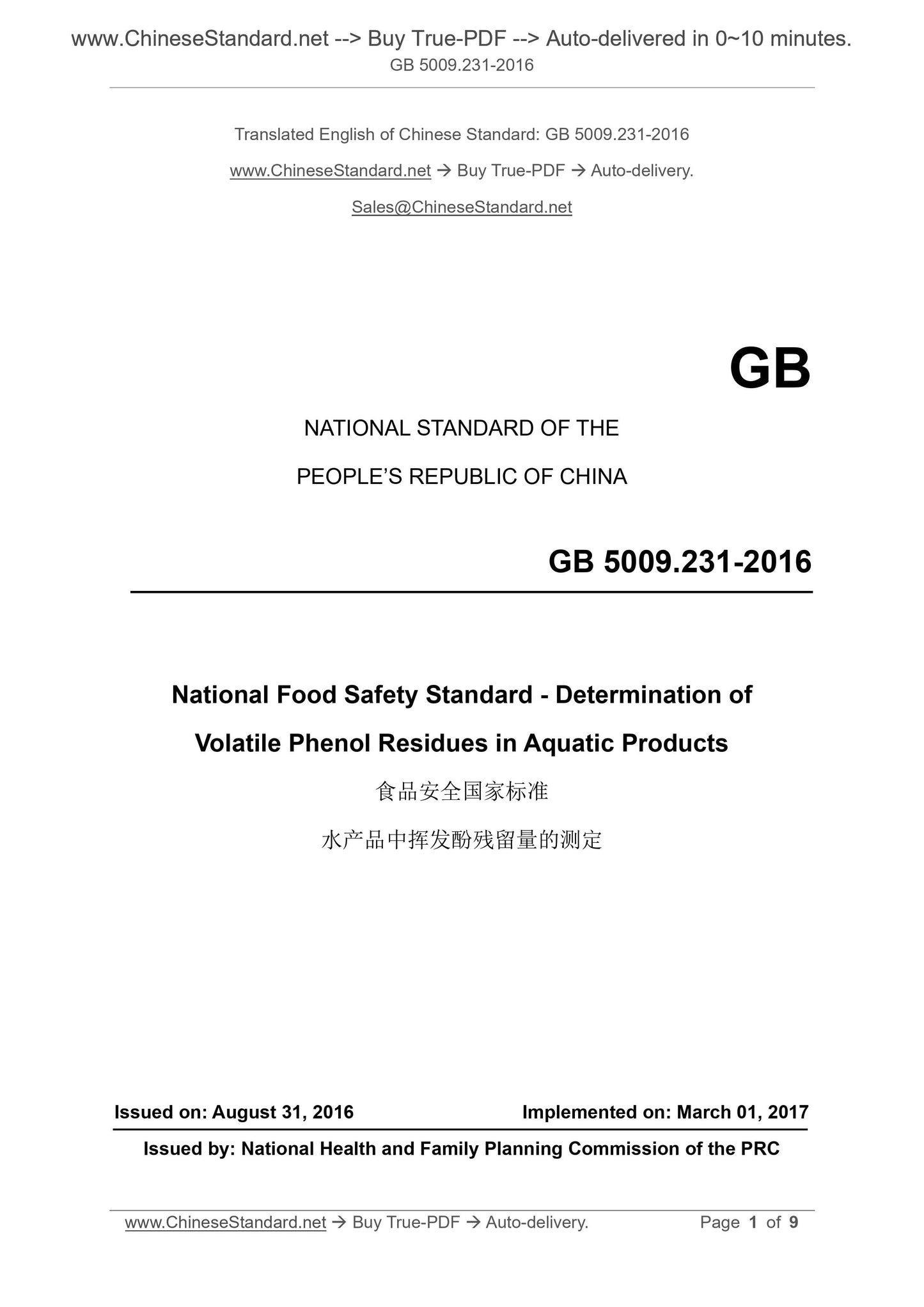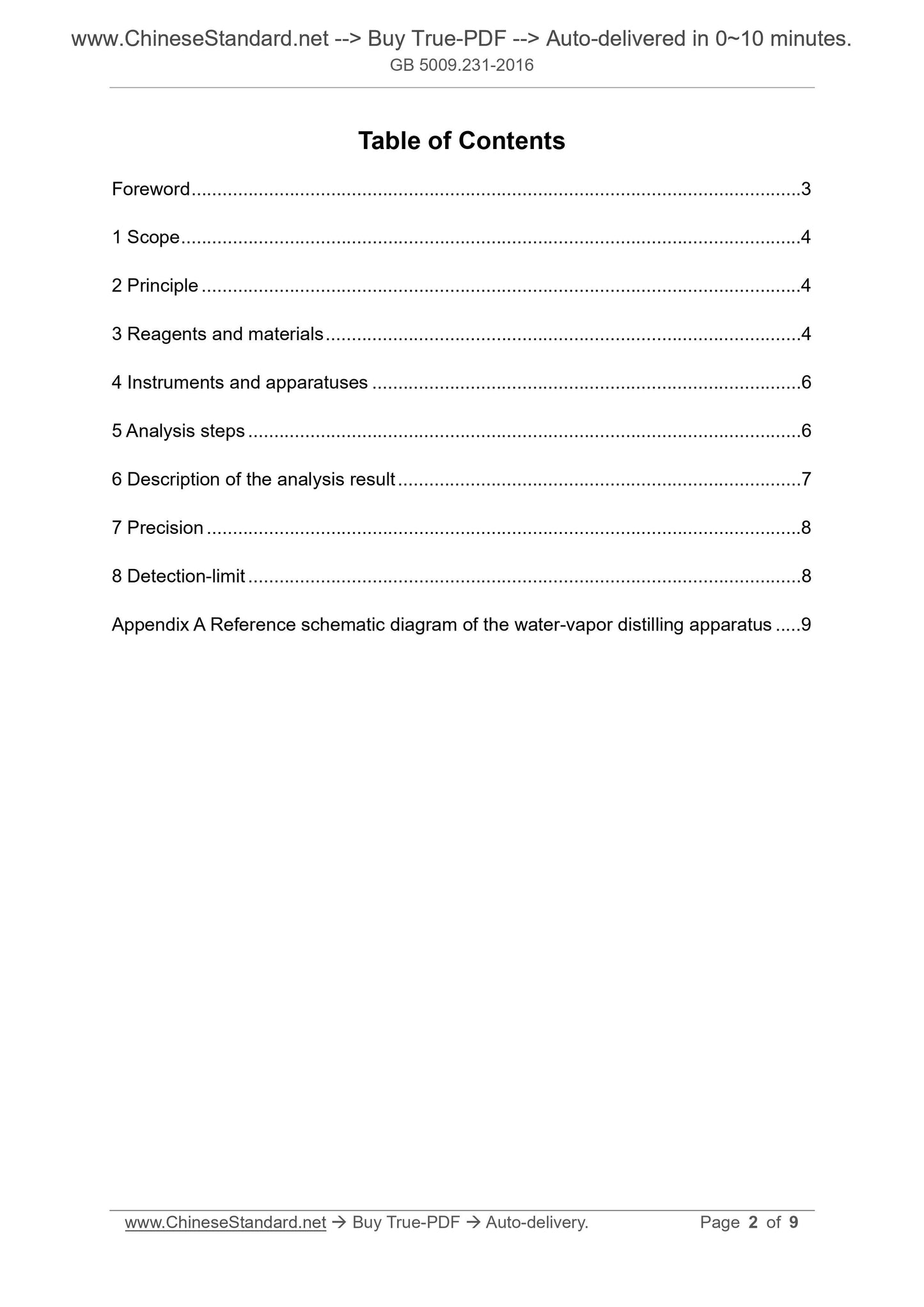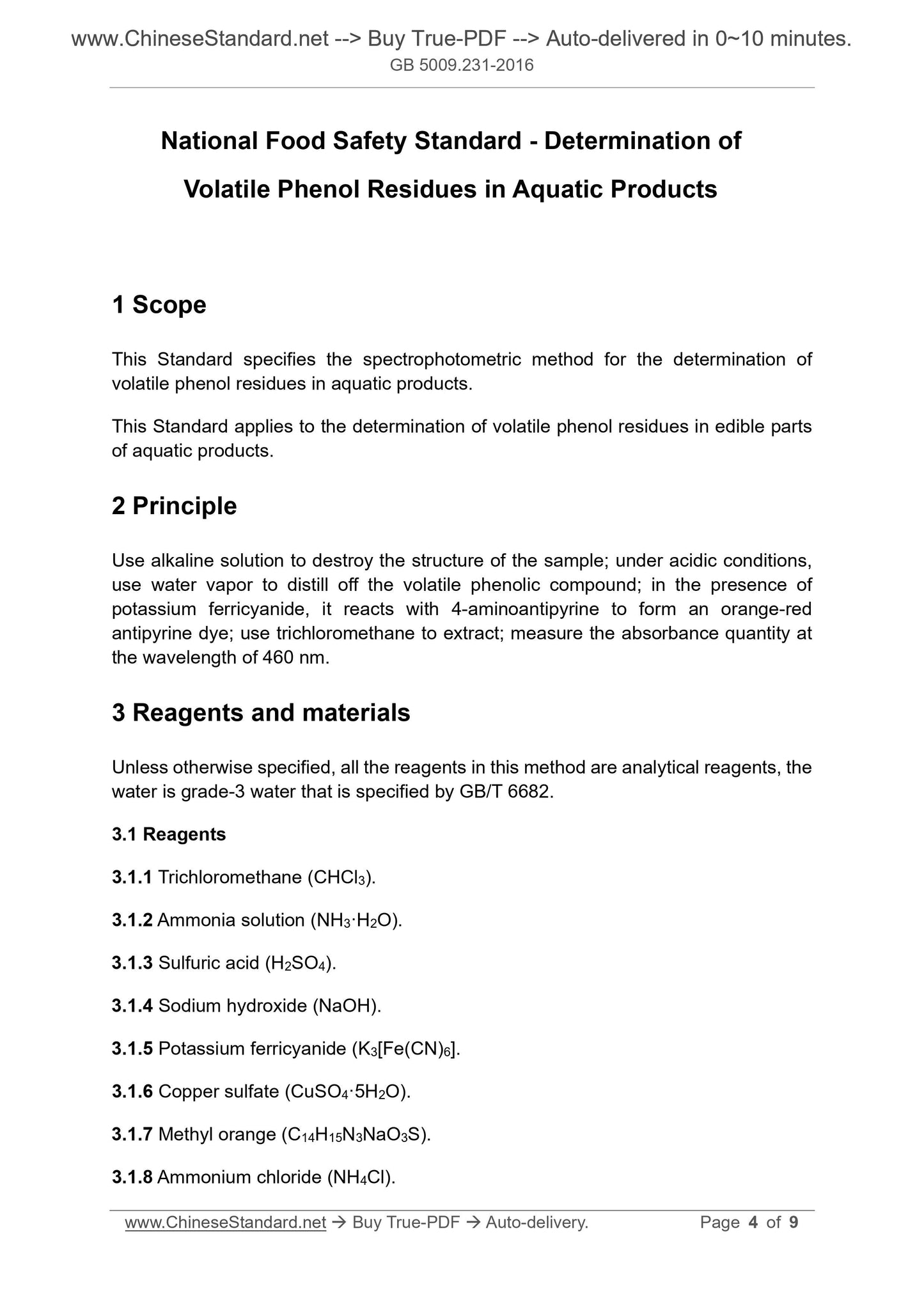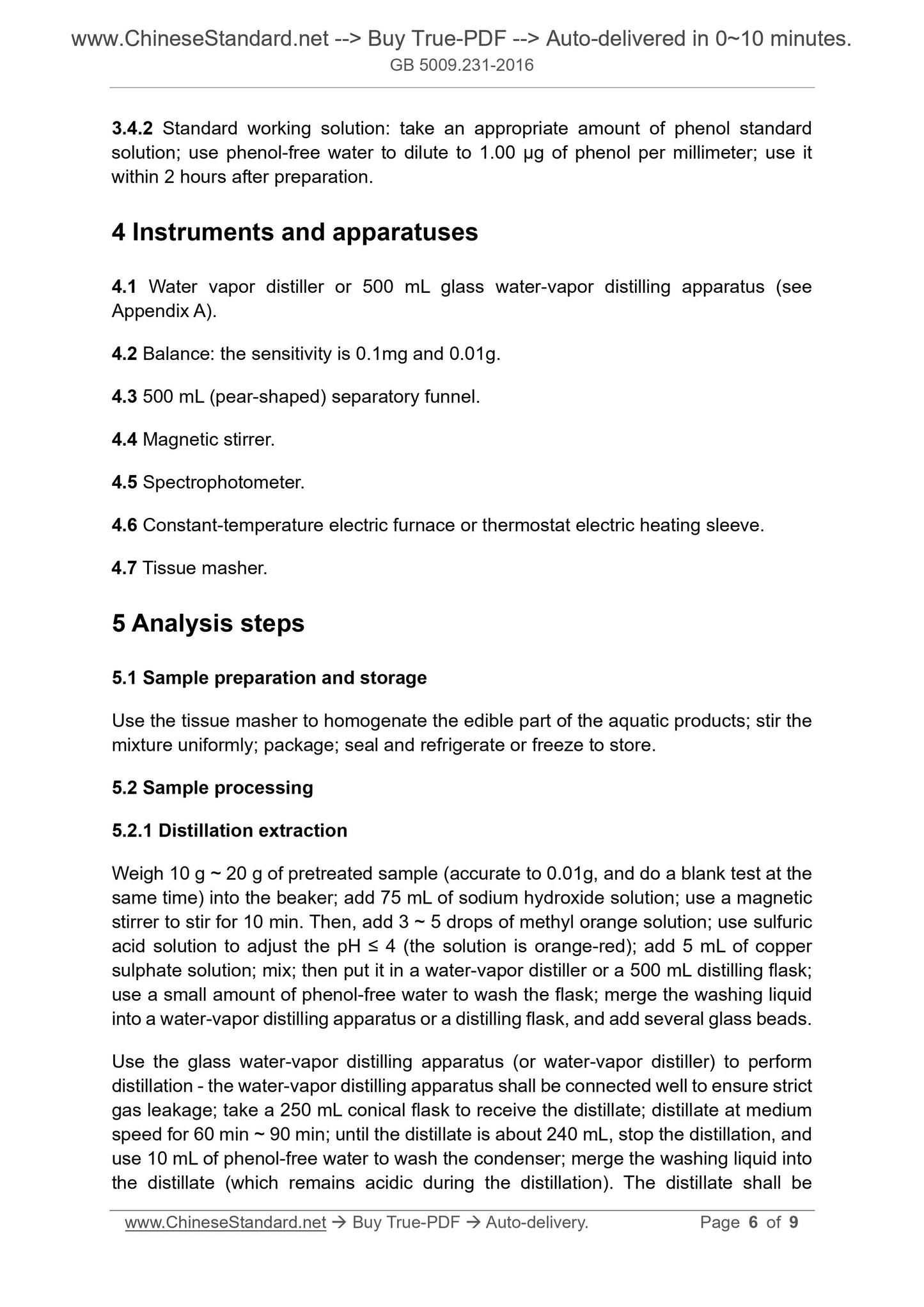1
/
of
4
www.ChineseStandard.us -- Field Test Asia Pte. Ltd.
GB 5009.231-2016 English PDF
GB 5009.231-2016 English PDF
Regular price
$70.00
Regular price
Sale price
$70.00
Unit price
/
per
Shipping calculated at checkout.
Couldn't load pickup availability
GB 5009.231-2016: Determination of volatile phenolic compounds residues in fishery products Spectrophotometric method
Delivery: 9 seconds. Download (and Email) true-PDF + Invoice.Get Quotation: Click GB 5009.231-2016 (Self-service in 1-minute)
Newer / historical versions: GB 5009.231-2016
Preview True-PDF
Scope
This Standard specifies the spectrophotometric method for the determination ofvolatile phenol residues in aquatic products.
This Standard applies to the determination of volatile phenol residues in edible parts
of aquatic products.
Basic Data
| Standard ID | GB 5009.231-2016 (GB5009.231-2016) |
| Description (Translated English) | Determination of volatile phenolic compounds residues in fishery products Spectrophotometric method |
| Sector / Industry | National Standard |
| Classification of Chinese Standard | B50 |
| Word Count Estimation | 6,666 |
| Date of Issue | 2016-08-31 |
| Date of Implementation | 2017-03-01 |
| Older Standard (superseded by this standard) | SC/T 3031-2006 |
| Regulation (derived from) | Announcement of the State Administration of Public Health and Family Planning 2016 No.11 |
| Issuing agency(ies) | National Health and Family Planning Commission of the People's Republic of China, State Food and Drug Administration |
Share







